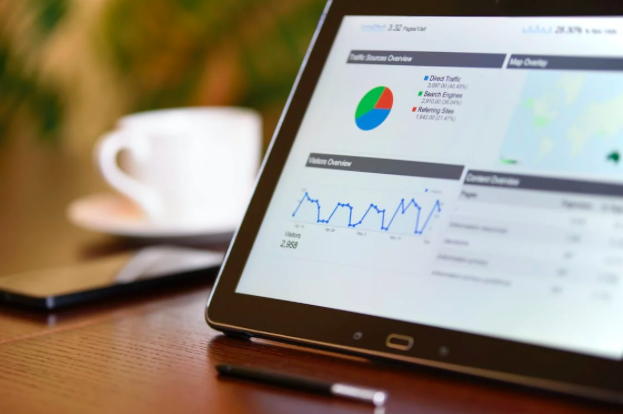How To Run a Successful Ecommerce Store in 11 Easy Steps
Running an online eCommerce store is one of the hardest things you can do. Probably because there are so many things to consider: the design, price point, shop layout, payment gateways, marketing strategy...the list goes on and on. But running your successful eCommerce store doesn't have to be stressful. With a bit of planning and foresight, anything is possible. Remember to follow these 11 easy steps for running a successful eCommerce store.

Select an Ecommerce Platform
There are tons of eCommerce platforms out there, but the most popular one is Shopify. If you're looking for something easy to use that provides excellent customer support and has a vast user base, then Shopify is the way to go.
Another option is Magento, which has a more complex interface and it's not as user-friendly as Shopify. With that said, many developers have created extensions that make Magento easier to use and more feature-rich than it already is. If you're unsure which platform is best for your business needs, you can also check out Mercari, an equally remarkable eCommerce platform.
Select a Niche
This is the first and most crucial step in running any successful eCommerce business. You need to select a niche you are passionate about, so you can spend your time on what matters - marketing. If you don't love what you're selling, it won't be easy to get others excited about it too.
Your niche should also be easy to explain and easy for customers to understand. This will make it easier for you to market your products on social media and in other business areas.
Select a Supplier
The first step to running a successful eCommerce store is selecting a supplier. You need the right supplier to provide quality products at affordable prices as an online business owner. It would help if you also found suppliers who can deliver your items on time and in good condition. To find the right supplier for your eCommerce business, there are several things that you should consider first:
- Do they have a good reputation?
- What are the costs?
- How much is their customer service like?
- How well do they ship?
Set up Payment Processing

Setting up payment processing is one of the essential steps in running an eCommerce store. Customers will be left wondering why they can't buy from you without a way to accept credit cards.
This is the first step in setting up their online store for many people. It's a huge milestone and will help you build trust with potential customers. If a customer sees that you have PayPal or Stripe as a payment option, they'll likely buy from you. Payment processing isn't something that should be overlooked or rushed through - there are plenty of pitfalls that could cost you time and money if not handled properly.
Choose a Domain Name and Hosting
When you're starting an online business, the first thing you need is a domain name. It's the address of your store. If your business name is already taken as a website address, you can still register it as a company name and use it for branding purposes. The host will provide you with an email address as well.
Set up Your Store
Once you have registered your domain name, it's time to set up your store. There are many e-commerce platforms, but we recommend Shopify if this is your first time building an online store, especially if you want more advanced features and integrations with third-party providers. These platforms will also give you access to their themes to customize your site design according to the type of products you sell or even create one from scratch with HTML code.
Add Products to Your Store
Once you've set up your store, it's time to add products. This can be done manually or automatically, depending on your needs. If you have a large inventory, it might be easier to use an automated product feed service like Feedvisor or Oberlo. Manual products can be added by uploading a spreadsheet or manually entering the product information.
Optimize Your Shipping Options
Ecommerce businesses can offer free shipping and other incentives to help increase sales. To take advantage of these strategies, it's essential to understand how each shipping method affects profitability. For example, if your business charges for shipping and offers free shipping with a minimum purchase amount, you should consider implementing tiered pricing so that customers don't have to spend more than necessary just for shipping costs (especially if they only need one item). Research providers for 3PL services (third party logistics) to handle picking, packing, shipping, and even returns.
Design Your Website and Add Content
You need a professional, eye-catching website to start your eCommerce store. Your website is the first place people will go when looking for your products. It's also where you should be sharing product information, pricing, discounts, shipping policies, and more. Customers want to feel like they know what to expect before they buy anything, which means having clear product pages that show off the product in all its glory. You can also offer customer reviews on these pages to help potential buyers decide.
Set up Security and Privacy Options
Secure online payment options are crucial for any eCommerce business owner. It would help if you offered safe and secure checkout options, so customers don't have doubts about making purchases from your site. This means using trusted payment processors like PayPal or Stripe that offer multiple payment methods, including credit cards and PayPal accounts (or other local payment services).
Some other security measures include setting up two-factor authentication on your website so users must enter an additional code before logging into their account or paying for items online. This can help prevent unauthorized access if someone gets their hands on their user ID or password by accident or malicious intent.
Drive Traffic to Your Site

There's no point in having an eCommerce store if you can't get people to come and buy from it. Below is how to drive traffic to your site.
Use Facebook ads: Facebook ads are one of the best ways to drive traffic to your site. You can create ads that target users based on their interests and demographic information so they're more likely to convert into customers.
Get reviews: Getting reviews is another great way to attract shoppers looking for products in your niche. As well as boosting your SEO rankings, reviews help shoppers make more informed decisions about what they want to purchase from your store.
Wrapping Up
Running an eCommerce store is a lot of work, similar to owning a brick-and-mortar business. It requires attention to detail, passion for the products you sell, hard work, and dedication. If you find something that sparks your interest, feel passionate about what you are selling, and enjoy talking to people about it, your chances of success are high. But be prepared for the time required to run a successful eCommerce shop.
